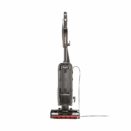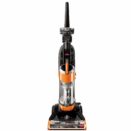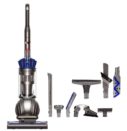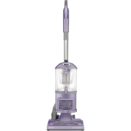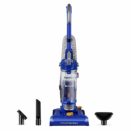Vacuums are integral to keeping your home clean and tidy, but if your vacuum is old or broken, you’re in for a problem. A vacuum can stop working for numerous reasons, and it’s important to know when your vacuum is beyond repair. Of equal importance, it’s worth learning how to keep your vacuum functioning as long as possible before buying a new one.
How Long Does a Typical Vacuum Last?
Usually, you can expect to get about 8 years out of your vacuum. However, things like brand and typical usage can affect that number drastically, bringing it down to 5 or even 3 years. Another factor that can make your vacuum stop working early is if it’s used for activities it’s not meant to handle. For instance, if you’re using a budget vacuum to clean up animal hair, chances are it’ll break quicker, and it probably won’t do the best job of cleaning up.
How Can I Keep My Vacuum Working Longer?
In order to get the most out of your vacuum, you have to take care of it, just like any other appliance. There are several considerations for maintaining your vacuum, and they’re all important. For instance, you should empty the bag or bin before it’s completely full; this will help prevent clogging and keep your vacuum in tip-top shape. You should also clean the inside of your vacuum at least once a year, if not more. It may sound funny to clean the device you use for cleaning, but sometimes, a good scrubbing is all it takes to get your vacuum back in working order.
Certain models might come with additional cleaning recommendations, and it’s always good to consult your manual for added tips. Also, always practice safe cleaning practices; for instance, you can use dish soap on several parts of your machine, but make sure to let them air dry before reinstalling–if they go back in wet, you risk electrocution.
How Do I Know I Actually Need a Replacement?
It’s possible your vacuum isn’t broken and simply needs a new part. One way you can check is by rolling the vacuum over a new carpet: if your carpet fibres stand up, your vacuum’s working. If they don’t, something’s wrong.
Fixing your vacuum is likely cheaper than spending hundreds to purchase a new one. If you suspect a clog, check the filter and hoses. If either is clogged, you can always remove the clog from your hose or buy a new filter (which experts suggest doing once a year). Additionally, make sure your dry belt hasn’t stretched or fallen off the track. If it has, you can easily replace it.
If you’re going for longevity, make sure your replacement parts are up to snuff and installed correctly. The last thing you need after spending money on new parts is for them not to work, thus requiring you to buy a new vacuum anyway.
Different vacuums will last for different amounts of time, but there are several best practices for keeping your vacuum well maintained. If you absolutely must replace it, we have several articles to help you choose your next vacuum. Vacuums are an essential part of any home, and if they’re not working correctly, it’s the same as not having one–so make sure to clean and take care of your current one and put time into choosing your next one.

